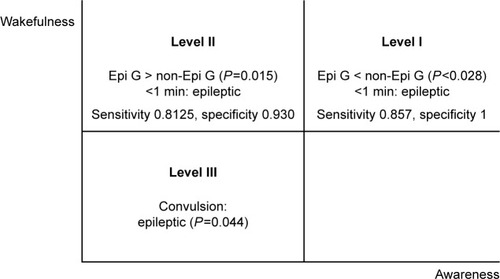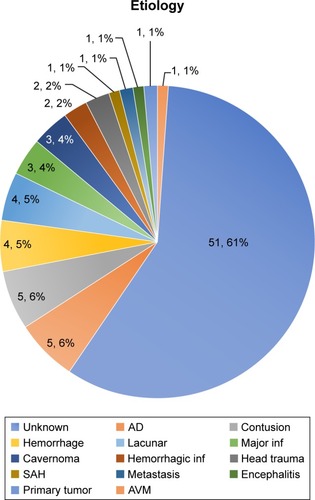Figures & data
Table 1 Clinical information
Table 2 Conscious level, duration of symptoms and convulsions
Figure 1 Consciousness level and duration of symptoms.
Notes: The two main components of consciousness are: wakefulness and awareness. In the full wakeful level (level I), there were more patients in the nonepilepsy group (non-Epi G) than the epilepsy group (Epi G). The lack of a definitive description of the aura by elderly might lead to a missed diagnosis. During level II of impaired awareness (level II), there were more patients in the Epi G than the non-Epi G. The duration of the epileptic seizure was <1 minute for both the level I and II levels. Conversely, in elderly patients who exhibited a loss of consciousness, neither the consciousness level nor the duration of symptoms could be used to determine the difference between epilepsy and nonepilepsy. Thus, at this level, convulsions might be the feature that needs to be observed in order to determine Epi G.

Figure 2 Etiology of epilepsy.
Notes: This figure presents the etiology of epilepsy. A total of 61% of these patients exhibited epilepsy of an unknown etiology followed by AD. Lacunar infarction (lacunar), major vessel infarction (major inf), hemorrhagic infarction (hemorrhagic inf), SAH, AVM.
Abbreviations: AD, Alzheimer’s disease; AVM, arteriovenous malformation; SAH, subarachanoid hemorrhage.
Abbreviations: AD, Alzheimer’s disease; AVM, arteriovenous malformation; SAH, subarachanoid hemorrhage.

